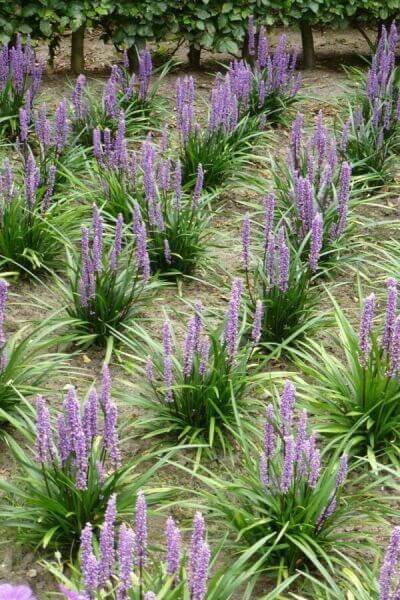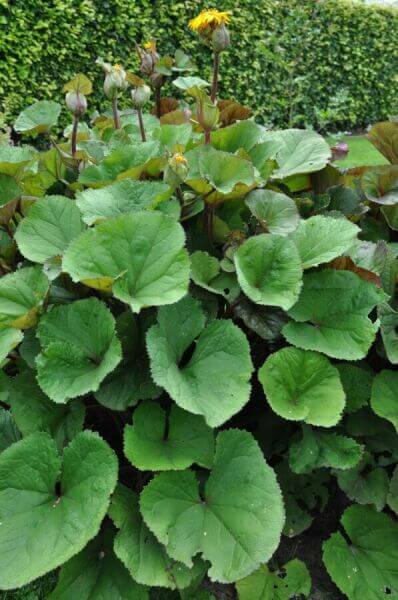Hedge Plants For Formal Borders
Hedge Plants For Formal Borders
Blog Article
Best Hedging Plants For Coastal Areas
Boost your garden's appeal with lavish hedge ranges such as Yew (Taxus), Thuja, Laurel, Photinia, and Bamboo, celebrated for their structural stability and environmental advantages.
Yew and Thuja provide evergreen protection and winter season durability, while Laurel uses rapid development and broad, aromatic leaves.
Photinia includes seasonal charm with its dynamic red foliage, and Bamboo provides a low-maintenance, serene atmosphere.
These hedges enhance air quality, decrease noise, and produce tranquil, personal spaces.
Appropriate planting, spacing, and upkeep ensure vigorous development and eco-friendly harmony.
Explore how these rich ranges can raise your garden's beauty and well-being.
Key Takeaways
Change Your Garden With Lush Hedge Ranges
- Select Yew for its thick, evergreen growth and exceptional durability.
- Opt for Laurel for its fast growth and broad leaves, guaranteeing fast privacy.
- Select Photinia for its dynamic seasonal foliage, which turns a striking dark red.
- Use Bamboo for a low-maintenance, winter-hardy hedge with visual appeal.
- Area plants 2-3 per meter and prune frequently for optimum development and health.
Popular Hedge Plants
When changing a garden with lavish hedge ranges, it's important to consider popular hedge plants such as Yew, Thuja, Laurel, and Photinia due to their unique qualities and benefits.
Yew (Taxus) is highly esteemed for its longevity and dense, green growth, making it a prime choice for sustaining landscapes.
Thuja is kept in mind for its evergreen foliage and robust winter season durability.
Photinia includes seasonal vibrancy with red leaves that darken gradually, producing dynamic visual appeal.
Laurel provides rapid growth and fragrant, broad leaves, perfect for fast personal privacy.
Furthermore, Bamboo is an exceptional option for atmosphere, using a low-maintenance, winter-hardy choice that boosts the garden's visual with its sophisticated, swaying walking sticks.
These selections deal with a range of horticultural requirements and preferences.
Benefits of Garden Hedges
Garden hedges offer a wide range of advantages, making them an important addition to any landscape. These natural barriers are cost-effective to carry out and provide significant wind security, enhancing air flow and contributing to noise decrease. The thick foliage of hedges like Thuja and Beech guarantees privacy by obstructing visibility, creating a remote and peaceful environment.
Hedges likewise play a vital role in microclimate regulation, supplying a steady environment that promotes plant development and lessens temperature level variations. Their complex leaf structures filter pollutants, enhancing air quality and contributing to a much healthier garden ecosystem.
Additionally, hedges excel in sound reduction, absorbing and deflecting acoustic waves to lower ambient sound levels. This dual functionality of offering both acoustic and visual privacy improves the general tranquility and aesthetic appeal of any garden.
Planting and Upkeep Tips
For an effective hedge, meticulous preparation of the planting location is essential. Make sure the soil has proper pH and drainage to support strong root development.
Space the plants appropriately for the selected species. Water the hedge regularly throughout its preliminary growth stage, changing as required with seasonal changes.
Carry out a systematic insect control and illness prevention strategy, utilizing chemical or natural treatments when necessary. Routinely check for aphids, termites, and fungal infections.
Apply mulch to retain moisture and reduce weeds. Seasonal pruning promotes dense development and air blood circulation, essential for plant health.
Following these standards will help you cultivate a vibrant, well-maintained hedge that boosts the beauty of your garden.
Spacing and Cutting Guidelines
Spacing and Trimming Guidelines
Correct spacing and cutting are essential for cultivating healthy, visually appealing hedges. Sufficient spacing guarantees each plant gets enough nutrients, light, and air flow.
Follow these standards for optimum hedge upkeep:
- Spacing: Position hedge plants 2-3 plants per meter to motivate robust growth.
- Pruning Methods: Routine pruning is necessary for maintaining desired hedge height and shape. Trim new growth in summer and cut down older wood throughout winter season.
- Seasonal Care: Adjust trimming schedules and approaches according to seasonal requirements to ensure plant health.
- Hedge Height: Regularly screen and cut to maintain the preferred hedge height and attain consistent visual appeals.
Adhering to these steps will guarantee your hedge grows, improving both the appeal and performance of your garden.
Selecting the Right Hedge
Choosing the Right Hedge
Choosing the proper hedge involves evaluating elements such as mature height, foliage density, and environmental durability. Successful hedge plant choice needs understanding each types' growth characteristics and site-specific flexibility.
For instance, Yew (Taxus) offers exceptional longevity and thick development, while Thuja is significant for its winter season resilience. In addition, considering upkeep requirements is essential; fast-growing types like Laurel or Privet need regular cutting, whereas low-maintenance choices like Bamboo or Ivy may be more effective for those seeking very little upkeep.
Ecological elements such as soil type, light schedule, and moisture conditions need to likewise direct the choice process. This cautious approach guarantees the picked hedges will flourish, offering both practical and aesthetic advantages to the garden landscape.
Shipment and Planting Guidance
To guarantee your hedge plants grow, they ought to be provided by specialized carriers and planted without delay upon arrival.
Follow these essential steps for effective planting:
- Soil Preparation: Enrich the soil with raw material to improve drain and nutrient material.
- Planting Depth: Create a trench twice the width and equivalent to the depth of the root ball.
- Watering Strategies: Water completely after planting, keeping the soil regularly moist but not filled.
- Mulching: Apply a layer of mulch to retain wetness and reduce weeds.
Consumer Assistance and Service
Given the essential role of timely support in horticultural pursuits, our consumer assistance group is offered 6 days a week through telephone, email, and social media to provide professional guidance and swiftly deal with any concerns. Their devotion to quick reaction times makes sure consumer satisfaction by dealing with inquiries associated with plant health, ideal planting methods, and upkeep schedules.

-------------------
Within 24 hours
This thorough support group, reinforced by an outstanding 9.3/ 10 client ranking, highlights our dedication to boosting the gardening experience for every single client.
Often Asked Concerns
How Long Does It Consider Hedge Plants to Develop?
Hedge check here plants usually need one to three years to become completely established, with the exact period differing by species and growing conditions.
Efficient care throughout this important duration is necessary for robust development. Constant watering, vigilant weed control, and appropriate fertilizer application are pivotal in promoting strong root development.
For instance, fast-growing types like Laurel might establish faster, while slower-growing varieties such as Yew might take longer. Diligent upkeep speeds up the establishment process, resulting in thick and healthy hedges.
What Are the Finest Hedge Plants for Privacy?
The question of the finest hedge plants for personal privacy includes assessing evergreen and deciduous options.
Evergreen hedges like Thuja, Laurel, and Cypress supply year-round protection, making sure constant personal privacy.
In contrast, deciduous hedges such as Beech provide seasonal privacy, shedding leaves in chillier months.
Secret maintenance suggestions for privacy hedges consist of routine trimming, fertilizing in spring, and appropriate spacing-- normally 2 to 3 plants per meter.
Furthermore, consistent watering and thorough weed elimination are essential for promoting healthy, dense development.
Can Hedge Plants Draw In Wildlife to My Garden?
Yes, hedge plants can attract wildlife to your garden by supplying vital benefits like shelter, food, and nesting websites, thus boosting local biodiversity. Yew, holly, and laurel are excellent for bring in birds, while ivy supports a variety of pests.
However, it is necessary to note that there are some downsides, such as increased maintenance to handle pests and regular maintenance. Carefully choosing and maintaining hedge varieties can help stabilize these drawbacks and benefits, eventually fostering a vibrant and sustainable community in your garden.
Exist Any Flowering Hedge Plants Available?
Yes, there are flowering hedge plants available that can enhance the charm of your garden.
For instance, Elaeagnus, also called Olive Willow, produces aromatic white flowers in the fall, adding a touch of elegance.
Photinia, another popular choice, showcases lively red leaves that develop into a rich green, producing a dynamic visual effect throughout the seasons.
To guarantee these plants thrive, it's important to practice appropriate pruning strategies and seasonal maintenance, such as cutting new growth in the summertime and cutting back in the winter.
These procedures will help preserve the health and visual appeal of your flowering hedges.
How Do I Prevent Insects in My Hedge Plants?
To avoid pests in hedge plants, use natural pest control techniques and keep proper hedge care. Introduce helpful insects like ladybugs, which victimize harmful pests, to create a balanced environment.
Routinely check your hedges for signs of infestation and immediately remove any affected parts to prevent the spread. Ensure the health of your hedges by applying balanced fertilizers and offering appropriate water.
Make use of mulching to maintain soil wetness and correct spacing to minimize plant tension and promote robust development. These practices jointly help in lessening insect problems and preserving a healthy hedge.
Conclusion
In essence, choosing the right hedge ranges such as Yew, Thuja, and Laurel can transform any garden into a peaceful sanctuary. These plants offer year-round plant, boost visual appeal, and deal useful advantages like noise decrease and wind protection.
Appropriate planting methods, precise spacing, constant watering, and seasonal cutting are vital for ideal development.
Trustworthy delivery services and skilled client support make sure a seamless experience from purchase to planting, making it easier than ever to elevate your outside space.
Garden hedges offer a plethora of benefits, making them an important addition to any landscape. These natural barriers are economical to implement and supply significant wind protection, enhancing air blood circulation and contributing to noise decrease. The dense foliage of hedges like Thuja and Beech ensures personal privacy by obstructing presence, creating a secluded and tranquil environment.

Pruning Strategies: Routine pruning is vital for maintaining desired hedge height and shape. Cut new growth in summer season and cut back older wood during winter.
Report this page